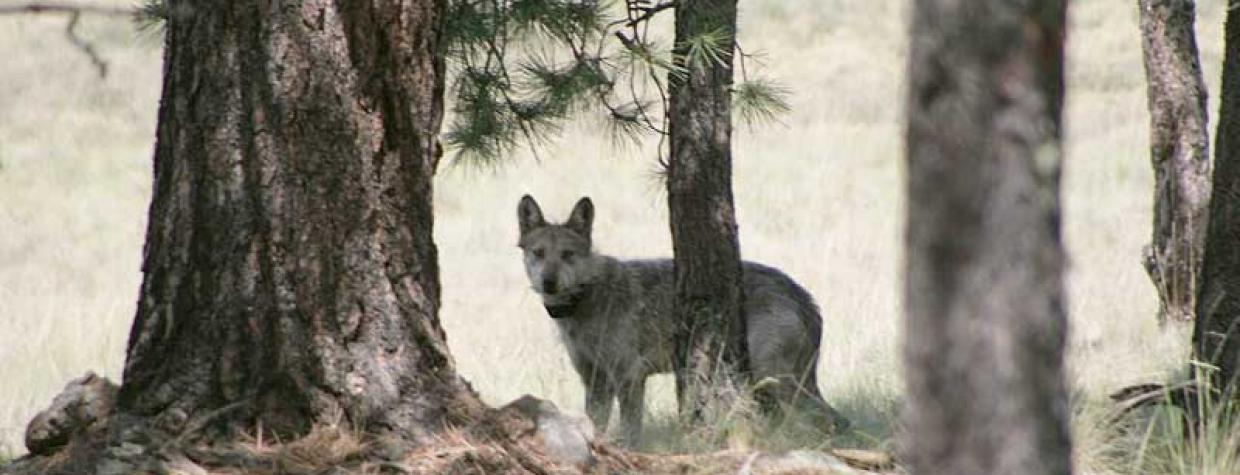The U.S. Fish and Wildlife Service has released a draft of its recovery plan for the Mexican gray wolf, laying out the population benchmarks the agency believes will allow the species to be removed from the federal endangered-species list.
The public has until August 29 to comment on the draft plan, which is available online.
Mexican wolves currently exist in two populations: one in Arizona and New Mexico, and one in Mexico. Under the agency's draft plan, the species would be considered for downlisting (from "endangered" to "threatened") when either the U.S. population of wolves reaches 320 for four consecutive years, or the Mexican population reaches 170 for the same number of years. Both stipulations would be contingent on achieving genetic diversity through scheduled releases of captive-bred wolves.
Assuming genetic diversity is achieved, the draft plan also says the wolves could be downlisted if both populations average 150 wolves over four consecutive years "with a positive growth trajectory."
To be considered for removal from the endangered-species list entirely, both populations would have to hit those population benchmarks for eight consecutive years. Genetic diversity via captive releases would be required then, too.
The agency says it anticipates recovery of the Mexican wolves in 25 to 35 years. There were 113 wolves counted in the U.S. population in 2016; the Mexican population is still being established and is much smaller. The species nearly went extinct in the 1980s, and the wolves living today are descended from a captive breeding program of just seven animals.
You can read the entire plan at this link, and you can get information about commenting on the plan at this link. Wolves are always a controversial topic, so we advise you to read the entire plan, then make your voice heard by adding your input.

